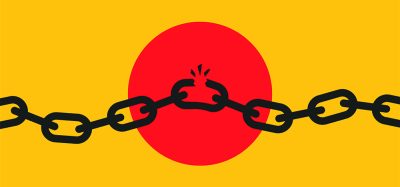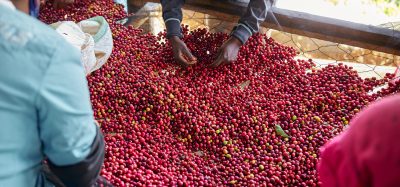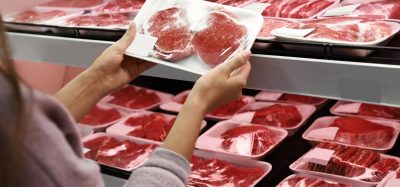The RESFOOD Project: Resource efficiency in the food chain
- Like
- Digg
- Del
- Tumblr
- VKontakte
- Buffer
- Love This
- Odnoklassniki
- Meneame
- Blogger
- Amazon
- Yahoo Mail
- Gmail
- AOL
- Newsvine
- HackerNews
- Evernote
- MySpace
- Mail.ru
- Viadeo
- Line
- Comments
- Yummly
- SMS
- Viber
- Telegram
- Subscribe
- Skype
- Facebook Messenger
- Kakao
- LiveJournal
- Yammer
- Edgar
- Fintel
- Mix
- Instapaper
- Copy Link
Posted: 30 June 2015 | Willy van Tongeren, René Jurgens and Wilfred Appelman, TNO | Ester Segal, Technion | Eva Petri, CNTA | Maarten Uyttebroek, VITO | Rafael Munoz Duque, ADESVA | No comments yet
The increasing demand for healthy and nutritious food requires an efficient use of the natural resources allocated to food production and processing. The EU funded project RESFOOD develops technologies and tools to overcome the barriers to a resource efficient food chain, leading to a reduction of water and energy use of between 25-80% and the recovery of valuable materials. Besides research and demonstrations of water treatment, disinfection and reuse, much attention is being paid to improving food safety through new fast monitoring and detection methodologies.
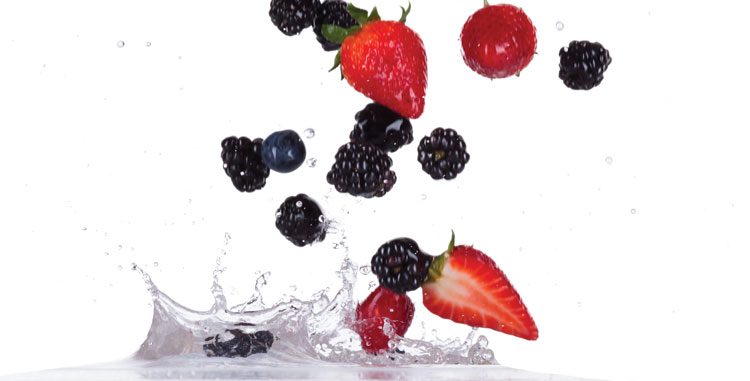

Water and nutrients are both valuable resources which are to be recovered as much as possible, while salts (Na+ ), growth inhibitors, microorganisms and crop protection agents should be removed or degraded to prevent damage to crops and/or emissions. For soilbased crops, the aim is to enhance water use efficiency with the use of fertigation for cultivation while maintaining required yield and quality of fruit. For soilless cultivation, the focus is on water and nutrient recovery and reuse by investigating and developing new water treatment concepts.
Optimal water use for soil-based food production
For field testing, soil humidity sensors are placed at different depths and the water content circulation patterns are monitored. Field trials have been conducted in the experimental plot of the ADESVA technological centre located in Lepe, Huelva, Spain. The crops studied were strawberry and blackberry, representing one of the most significant crops in Huelva. Using three different irrigation tapes with different flows (2.5, 3.8 and 5l/h) while keeping the amount of fertiliser constant, the influence on the production and quality of the fruit was studied. No significant statistical differences were found between the three irrigation tapes in any of the analysed quality parameters during the season of blackberry cultivation, except in the vigour of the plant, which was greater in the 5l/h tape. This means that water and nutrient use by the plant can be reduced, representing a saving of 34% and 50% respectively. Moreover, continuous sampling of the drainage volume of the irrigation via lysimeters gave average values of 28%, 60% and 68% drainage for the 2.5, 3.8 and 5l/h lineal metre tapes, respectively. These results indicate that a minimum water dosing of 2.5l/h can be applied with no significant impact to the quality of the crops. This will reduce water use and nutrient losses from leaching by up to 80%, considerably minimising the environmental impact of cultivation with regard to water/nutrient use and prevention of soil and ground/ surface water contamination.
Prevention of sodium accumulation in water cycle closure
When using soilless cultivation systems, achieving full water cycle closure requires a solution that can prevent Na accumulation. Selective Na removal is not yet feasible, but such a system should produce a concentrate that can be employed as fertiliser (e.g. in agriculture) in order to make optimal use of the nutrient value present in the water.
Within RESFOOD, a new technology concept for nutrient and water recovery was formulated and tested to achieve these goals. Nanofiltration (NF) and electrodialysis (ED) were used to separate the monovalent (Na+, K+, NO3-) and multivalent ions (Ca2+, Mg2+, SO42-,PO42-) in the drain/discharge water. Subsequently, ED is used to further concentrate the monovalent stream to obtain a Na+, K+, NO3- concentrate with a desired concentration of 40kg N/m3, which can be sold as a fertiliser. The multivalent ions are recycled to the greenhouse.
ED treatment at maximum recovery was found to have near zero costs in the case of treatment of discharge water for a 30ha company or treatment of drain water at a 5ha company. Due to the large ratio between drain water treated and concentrate produced (~380:1), only a small quantity of concentrate is produced yearly. It is expected that collecting concentrates from multiple companies would bring together enough volume to make the product commercially profitable worthwhile.
The ED concept was demonstrated on-site at our demonstration nursery in the Netherlands, under real conditions and at company scale. The results were promising:
- The capability to maintain a steady state concentration of Na+ in the drain water
- The capability to control the rate of monovalent ion removal
- The effect of a steady Na+ concentration on crop growth
- The possibility to produce a concentrate containing 40kg N/m3
- Good insight into the actual costs and energy use found in practice
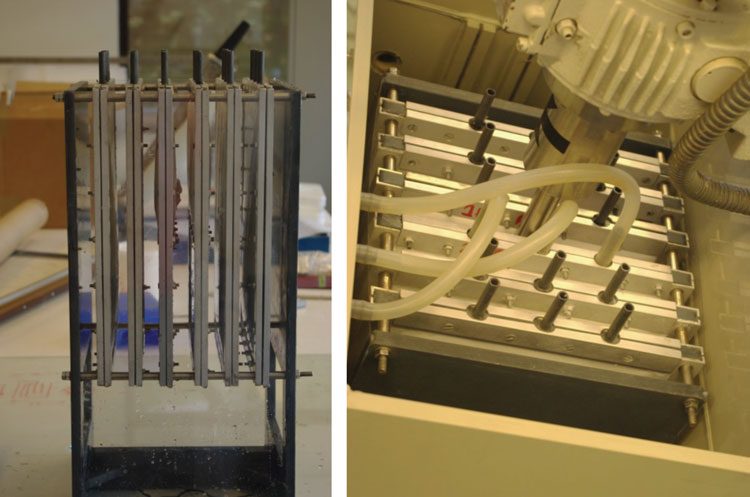

Figure 1: Bench-scale low pressure particle assisted ultrafiltration, with a) membrane stack, to be submerged in the water; b) permeate withdrawal at top-side
Since fresh cut vegetables are consumed raw, and washing is the only processing step able to reduce the microbial load, it is frequently the case that pathogens enter into the production chain. Chlorine is the most common sanitiser used. However, concerns about possible disinfection by-products, as well as the large amount of drinking water and quality ice water wasted each day to wash vegetables, have urged the fresh cut industry to seek alternatives.
The RESFOOD project addresses these challenges by searching for solutions to treat water and make it reusable through efficient water and energy use in the washing steps, and reduce health and safety risks improving decontamination and disinfection of water and vegetables using a multi-hurdle approach.
An improved washing system for raw consumed vegetable processing
To simulate the commercial processing of wash water conditions and to overcome problems associated with up-scalability, an improved washing system was designed by KRONEN, a partner in the RESFOOD project. This new washing system incorporates the principle of water recirculation providing a higher recirculation rate within the system and improving the mechanical effect of water on the surface of vegetables.
The savings in water consumption envisaged by RESFOOD are pursued through optimising water management and enabling water reuse through the implementation of decentralised water purification technology. The first step was auditing the current process and determining options for saving and reusing water. Subsequently, innovative technologies for water purification and water cycle closure were developed and tested to determine their feasibility. These technologies include ceramic and capillary ultrafiltration and low pressure particle assisted ultrafiltration (LPPA-UF): this is an innovative, UF-based technology from TNO that uses particles in a novel way to prevent fouling on the membrane. LPPA-UF can also be combined with absorption, for instance to recover valuable components (Figure 1).
Lab scale investigations, demonstration tests of treatment with a disk filter (pre-filtration), capillary UF and UV (disinfection) were carried out. The LPPA-UF concept had a similar performance but requires further development before demonstration.
The demo-installations will be tested on site at Vezet in the Netherlands from June to September 2015. The monitoring of the pilot project is supported by Microbiome (microbiological analysis, bacteria profiling ) and Technion (online water quality sensors, see below). A number of small scale experiments onsite have already showed that 50% reuse appears to be possible without losses in food quality and safety.
New strategies for product and water disinfection
An innovative strategy based on hurdle technology (positive/negative pressure plus chemical sanitisers) was investigated to provide a ‘kill step’ to eliminate pathogens from the surface of fresh cut products through an improved contact between antimicrobial solution and bacteria. However, the pilot plant scale evaluation showed no higher efficacy in terms of a reduction of microbial load on the product with respect to the treatments at atmospheric pressure.
Consequently, in the absence of strategies to eliminate pathogens from the fresh cut vegetables, the disinfection of washing water was addressed rather than the product. The study aimed to examine technically effective chlorine-alternative disinfection technologies inducing lower (or no) disinfection by-product (DBP) formation and prevention of cross-contamination during washing. For this purpose, a variety of sanitisers were used. After testing at pilot-plant scale, their ability to remove microorganisms without affecting product quality and presenting problems associated with the use of chlorine (such as DBPs), peroxyacetic acid and chlorine dioxide were selected as disinfectants.
Fast detection and monitoring reduces risks
Food and water borne pathogens pose a great risk to food and water safety and are a threat to the food supply chain. To date, detection and identification of food and water borne pathogens in food processing and manufacturing facilities continue to rely on traditional culturing techniques, which typically require several days to obtain results, making real-time assessment of food safety unfeasible. Moreover, even advanced ‘rapid’ techniques in food microbiology e.g. biochemical kits, enzyme-linked immunosorbent assays (ELISA), and polymerase chain reaction (PCR) assays, lack the ability to detect microorganisms in real-time or outside the laboratory environment. Also, most of these methods are still labour intensive, complex and time consuming.
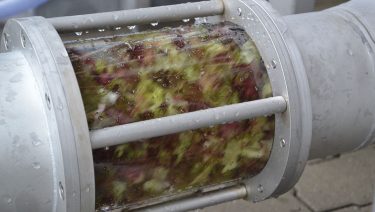

The fresh cut product washing system developed within the RESFOOD project, designed to increase water recirculation and improve the mechanical effect of washing
Therefore, there is an urgent need for rapid, accurate, cost effective, and reliable methods to evaluate in real-time the quality and safety of water and food throughout the supply chain. Biosensors offer an opportunity to fulfil this niche. Developments in biosensor technology over the last decade have generated promising results; however, real-time detection of food borne pathogens is not yet feasible. The work carried out in RESFOOD has been designed as a response to this important challenge.
A novel biosensing platform was developed for a rapid detection and identification of microbial contaminations in product wash water. The study focuses on the design and fabrication of a prototype device based on an array of porous silicon label free optical biosensors for bacteria detection. The optical label free biosensing platform is based on nanostructured oxidised porous silicon, designed to directly capture the target bacteria cells onto its surface with no prior sample processing (e.g. pre-concentration or lysis). Exposure of these nanostructured surfaces to the target bacteria results in ‘direct cell capture’ onto the biosensor surface, while these specific binding events induce predictable changes in the thin-film optical interference spectrum of the biosensor.
Biosensing experiments, with ‘real’ processed water from the different food industry partners in RESFOOD demonstrate promising results for the detection of a predetermined target bacteria, i.e. Escherichia coli. The main advantages of the biosensors are related to the speed of measurement and the ability to remotely detect bacteria in the factory or in the field. Moreover, these biosensors are highly generic and could be potentially applied for rapid detection and identification of a variety of microorganisms (Figure 2).
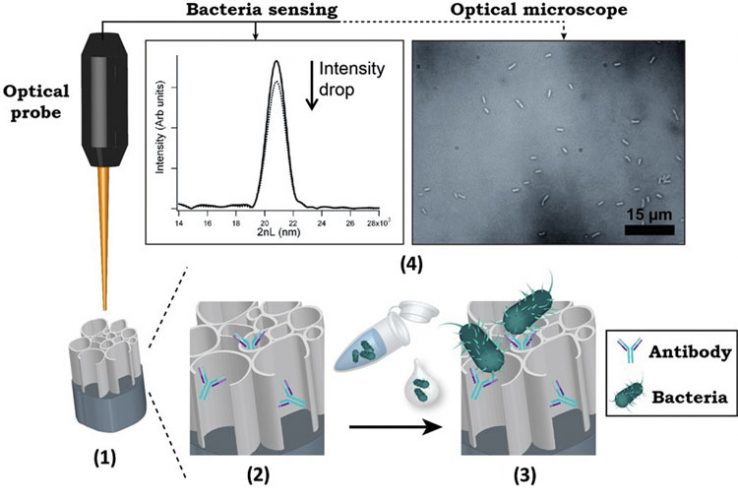

Figure 2: The biosensing platform developed for a rapid detection and identification of microbial contaminations in product wash water
Double valorisation of food by-products improves feasibility
Food processing by-products are often used as feed or bio energy sources. In general, these by-products still contain useful major compounds like carbohydrates, proteins and lipids, and minor compounds like carotenoids, polyphenols and terpenes. Double valorisation of food by-products towards the combination of recovery of both a major compound and a minor compound is often necessary to make the process economically feasible. Traditionally, organic solvents like hexane or methanol are used to extract phytochemicals from plant material. However, organic solvents need to be completely removed from the final products and have a negative impact on the environment. Therefore, more environmentally friendly extraction techniques were investigated.
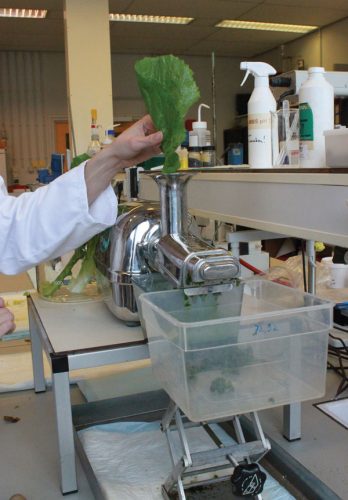

Endive byproduct pressing for the recovery of proteins, carried out by TNO in the Netherlands
Endive by-products, as an example for green leafy vegetables, were examined for the recovery of proteins and terpenes (sesquiterpene lactones). About half of the protein fraction is present in the form of RuBisCO, an enzyme that plays a major role in carbon fixation during photosynthesis. It has a good nutritional value and good emulsifying and foaming properties. The endive by-products were pressed on pilot scale in juice and pulp and the proteins were recovered from the juice1. The sesquiterpene lactones were also recovered from the juice after resin adsorption. They were tested for anti-fungal properties but did not show any of these.
Carotenoids are fat soluble natural pigments, while polyphenols are moderately water-soluble plant metabolites. Both phytochemicals have antioxidant properties and therefore have a positive impact on human health. Carotenoids were extracted from food processing by-products of carrot and endive after enzymatic pre-treatment of the biomass by-products by green extraction solvents like ethyl acetate and supercritical CO2. The results show that enzymes can have a beneficial effect on extraction efficiency, but the use of an aqueous pH buffer for optimal enzyme activity can be counterproductive for extraction of the apolar carotenoids.
Polyphenols in fresh apple juice are oxidised very rapidly after pressing. An innovative juicing technology was tested to prevent oxidation of polyphenols in the juice and pomace, leading to a higher polyphenol concentration and increased value of the juice and pomace. Furthermore, polyphenols in the pomace were extracted with an industrial extraction technique using ethanol or hot water. Due to their relatively low concentration in the extraction solvent, the polyphenols in the solvent were concentrated using membrane technology. The polyphenol extraction and membrane separation were performed on lab and pilot scale using a solvent pilot plant. A techno-economical assessment showed the importance of the valorisation of apple pomace towards the combination of a major compound like pectin, a complex polysaccharide with gelling properties, and a minor compound like polyphenols.
Reference
- De Jong, GAH, Geerdink, P, Bussmann, PJT & Hylkema, N. Economical process for the isolation of functional protein from plants. Patent WO2014/104880A1 (2014).
About the authors
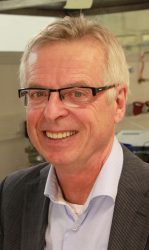





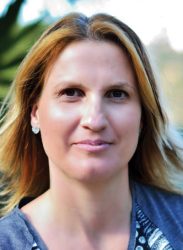





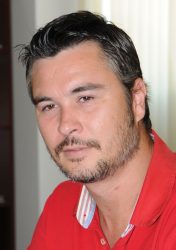

The rest of this article is restricted - login or subscribe free to access
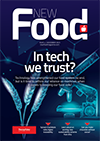

Why subscribe? Join our growing community of thousands of industry professionals and gain access to:
- bi-monthly issues in print and/or digital format
- case studies, whitepapers, webinars and industry-leading content
- breaking news and features
- our extensive online archive of thousands of articles and years of past issues
- ...And it's all free!
Click here to Subscribe today Login here



